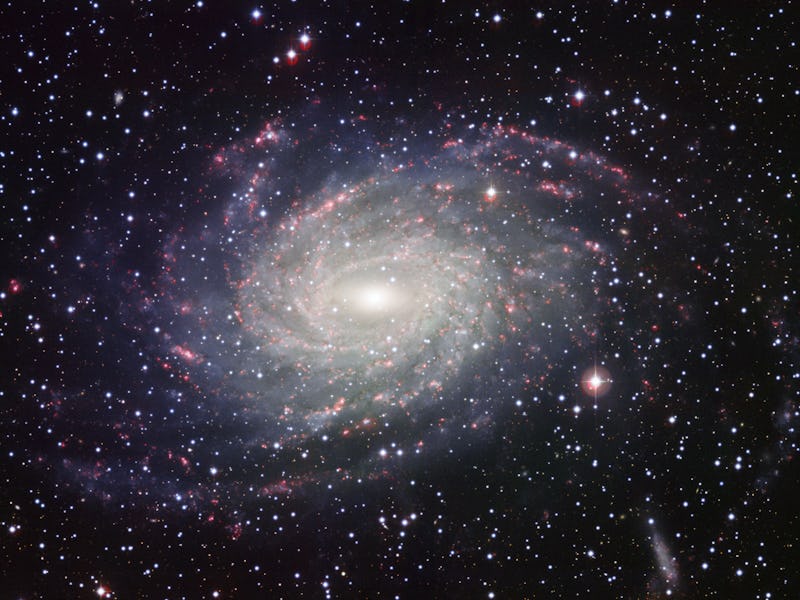Uniview's Virtual Tour to the Edge of the Known Universe Is Terrifying
Travel safely, space nerds.

As the universe is unimaginably expansive and constantly growing, there’s pretty much no chance we everyday Earthlings will never get to see the majesty of deep space firsthand. Scientists at the American Museum of Natural History (AMNH), however, have given us a very compelling alternative.
Along with the Swedish planetarium design company SCISS, researchers with the museum helped to develop a computer program called Uniview that lets non-astronauts zip through the universe at light speed. It even lets you stop by your favorite planets or moons in the solar system.
On Wednesday, Jackie Faherty, an AMNH senior scientist who worked on the program, demoed the visualization software at the Inverse Lunar Eclipse Party and Science Fair at Caveat in New York City. To put it mildly, it blew our collective minds.
“The layers that you’re seeing, those are images taken by spacecrafts so we didn’t make a lot of what you’re seeing up,” Faherty tells Inverse. “I can fly us completely out of the solar system, out of the Milky Way, and even to the edge of the known universe.”
Faherty showed onlookers what Uniview could do by flying to Saturn and showing us the gas giant’s huge ring systems. She couldn’t resist taking a pit stop at her favorite celestial object in the solar system along the way, which is one of Saturn’s many moons, Enceladus.
Jackie Faherty at her booth at the Inverse Science Fair. Via @shazthephotog.
“Enceladus is covered with this icy crust, and there are these cracks that are all over it,” Faherty explained. “What’s happening is that Enceladus has geysers that are blowing off material from an underwater ocean, and they’re polluting one of the planet’s ring systems; it’s dumping material onto the other moons. It explains so much of what we saw going on in the moon system.”
All of the data that brings this universe inside your computer to life is curated and updated by the AMNH’s own repository, a version of which is available online on the museum’s website.
The galaxy is at your fingertips, space nerds. Travel safely.